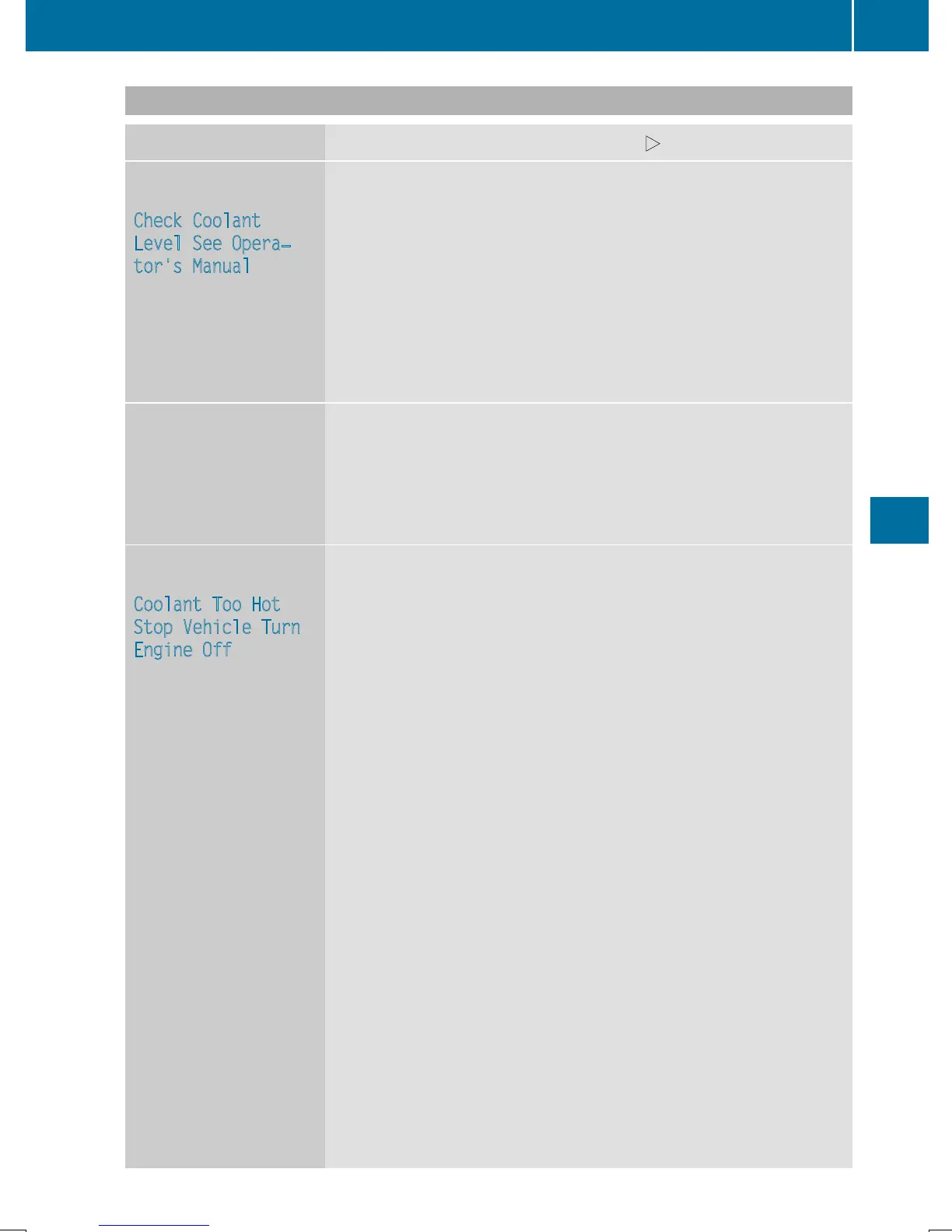Engine
Display messages
Possible causes/consequences and M Solutions
+
Check Coolant
Level See Opera‐
tor's Manual
The coolant level is too low.
!
Avoid making long journeys with too little coolant in the engine
cooling system. The engine will otherwise be damaged.
X
Add coolant, observing the warning notes before doing so
(
Y page 311).
If you have to add coolant frequently:
X
Contact a qualified specialist workshop and have the engine
cooling system checked.
?
The fan motor is faulty.
X
At coolant temperatures below 248 ‡ (120 †), drive to the
nearest qualified specialist workshop.
X
Avoid heavy loads on the engine as you do so, e.g. driving in
mountainous terrain and stop-start traffic.
?
Coolant Too Hot
Stop Vehicle Turn
Engine Off
The coolant is too hot.
A warning tone also sounds.
G
WARNING
Do not drive when your engine is overheated. This can cause some
fluids which may have leaked into the engine compartment to
catch fire.
Steam from the overheated engine can also cause serious burns
which can occur just by opening the hood.
There is a risk of injury.
X
Pull over and stop the vehicle safely and switch off the engine,
paying attention to road and traffic conditions.
X
Secure the vehicle against rolling away (Y page 171).
X
Wait until the engine has cooled down.
X
Make sure that the air supply to the engine radiator is not
blocked, e.g. by snow, slush or ice.
X
Do not start the engine again until the display message goes out
and the coolant temperature is below 248 ‡ (120 †). Other-
wise, the engine could be damaged.
X
Pay attention to the coolant temperature display.
If the temperature increases again:
X
Visit a qualified specialist workshop immediately.
Under normal operating conditions and with the specified coolant
level, the coolant temperature may rise to 248 ‡ (120 †).
Display messages
251
On-board computer and displays
Z

